Beyond their juicy sweetness, oranges are revealing a surprising potential: the power to revolutionize sustainable design. As mountains of citrus waste pile up globally, innovative thinkers are reimagining orange peels and leaves as valuable resources. These groundbreaking projects, born from a commitment to circular economy principles, showcase the incredible versatility of orange waste and offer a glimpse into a future where agricultural byproducts fuel a more sustainable and environmentally conscious world.
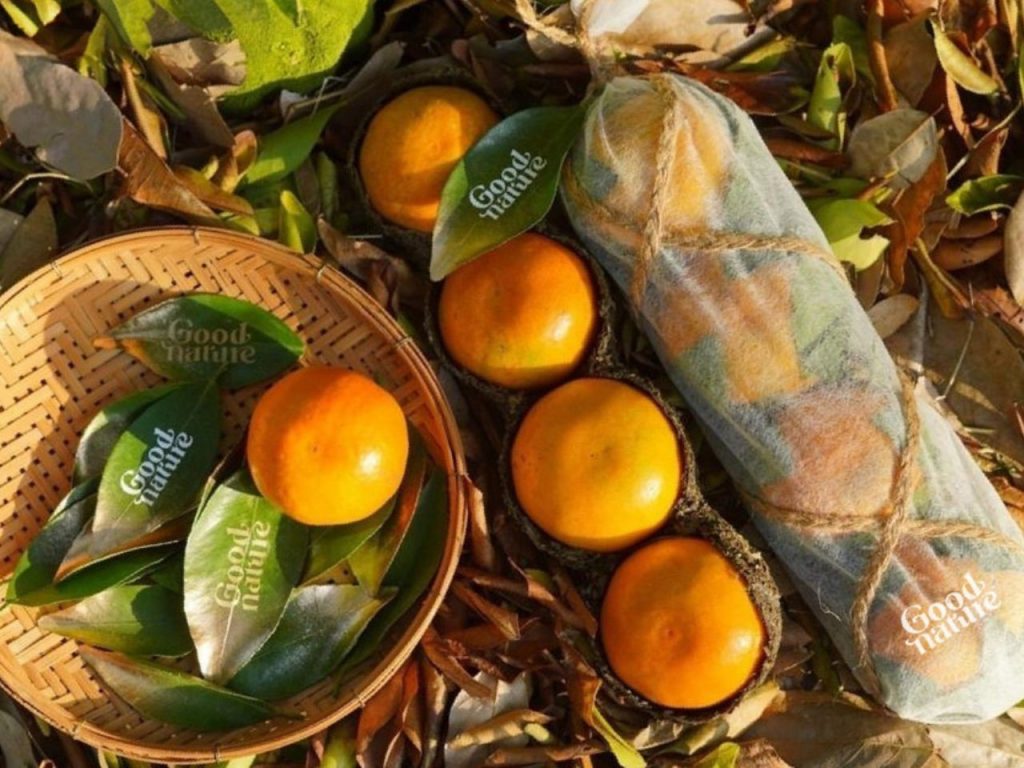
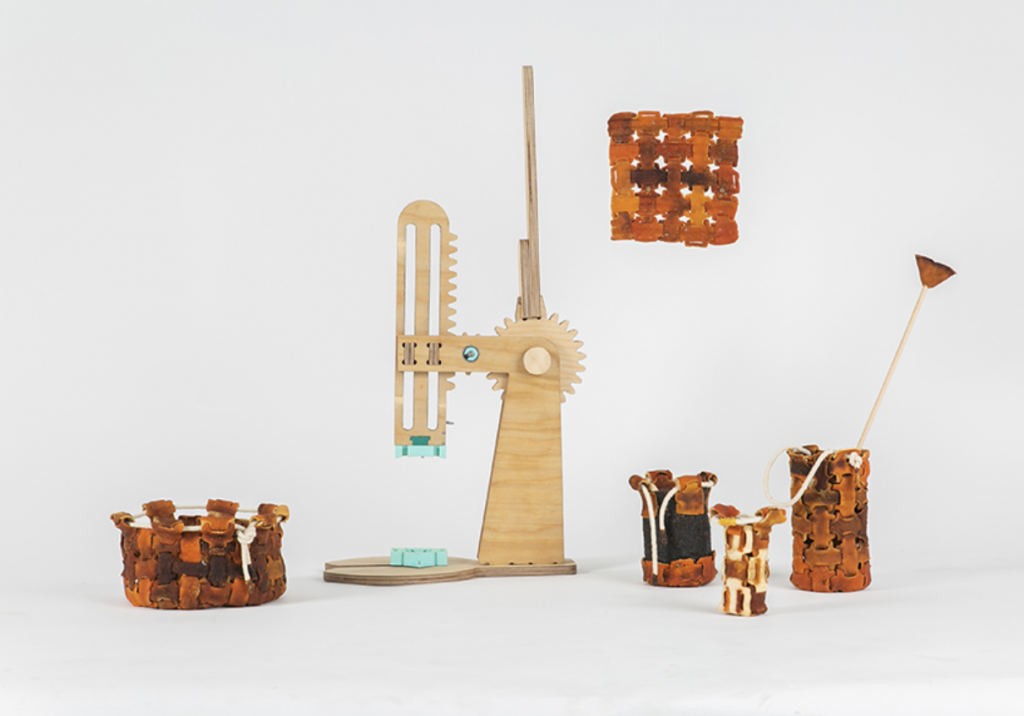
O peel by Yuli Meroz
Yuli Meroz, guided by her ecological design philosophy, explores the untapped material potential of orange peel in her captivating collection of crafts. Driven by a desire to harness the unique properties of this common resource, the Israel-based designer meticulously examines the peel’s texture, color, and aroma to create distinct and easily identifiable pieces. Meroz’s investigation centers around preserving the peel’s natural characteristics, ensuring that the material’s origins remain evident in the finished products.
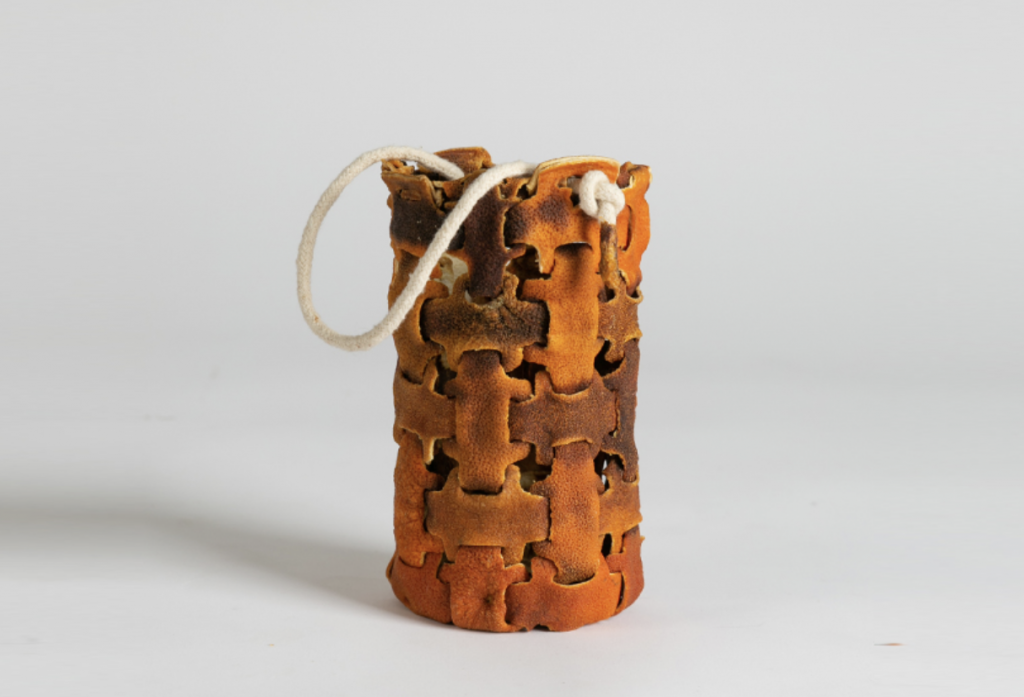
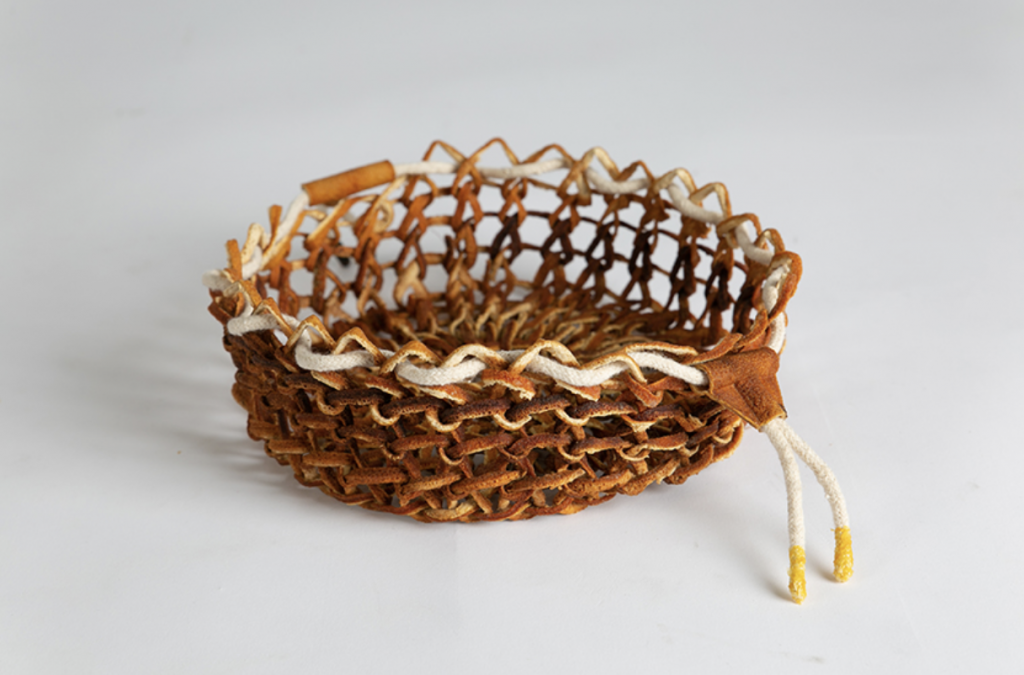
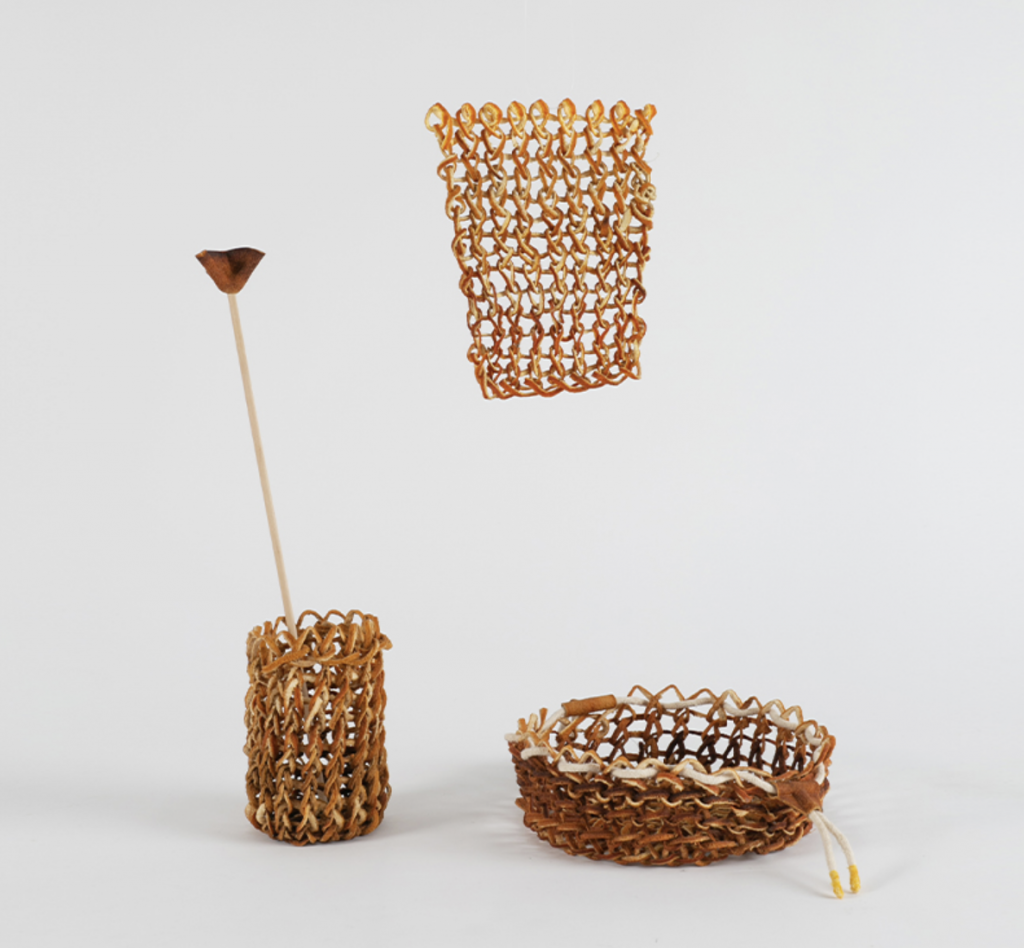
O peel by Yuli Meroz
Through careful observation and experimentation, Meroz developed four key techniques for processing orange peel: knitting with thin straps, cutting templates for modular construction, pressing the peel onto itself and other materials, and creating a coating from ground pulp, seeds, and juice. These techniques, combined with specially designed tools like a template cutting machine and a loom, allow her to create elements in varying sizes, showcasing the peel’s versatility and adaptability.
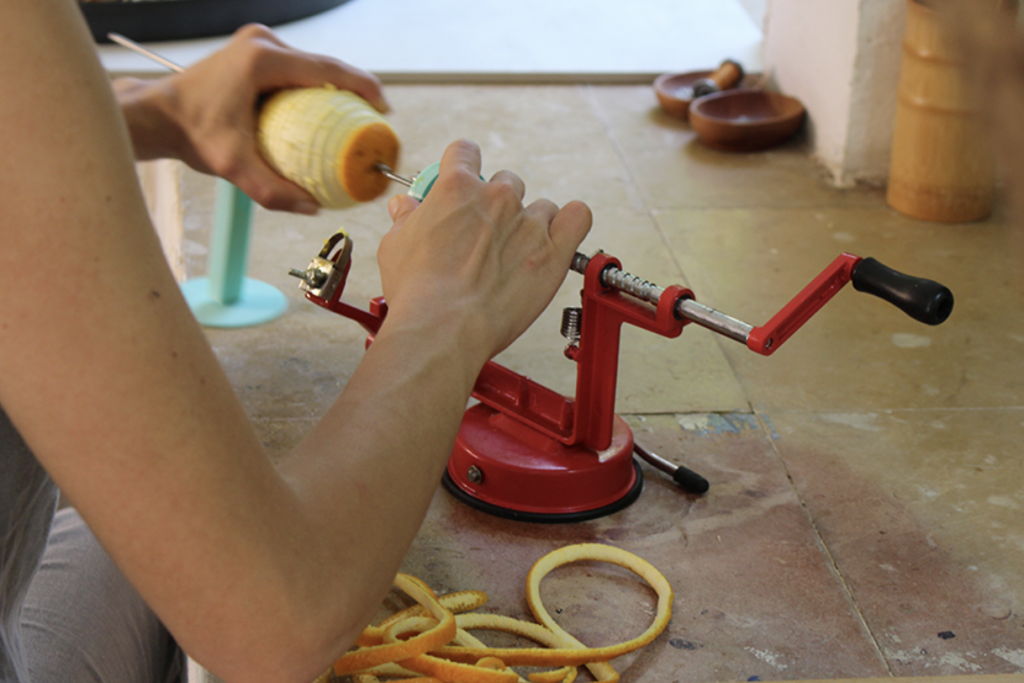
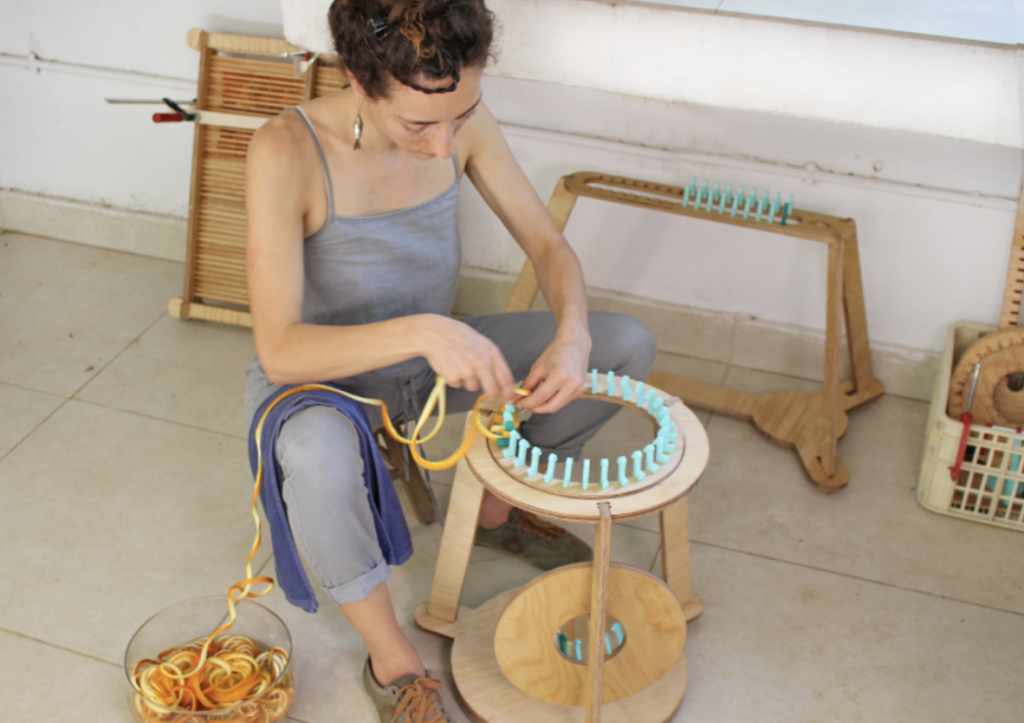
O peel by Yuli Meroz
Meroz’s commitment to honesty and sustainability extends to the final presentation of her designs. Choosing to leave the designs in the form of the tools that created them, such as a knitted basket retaining the shape of its loom, she celebrates the inherent process and material, further emphasizing the project’s ecological ethos. The result is a collection of intricate and visually striking crafts that highlight the beauty and potential of repurposed orange peel.
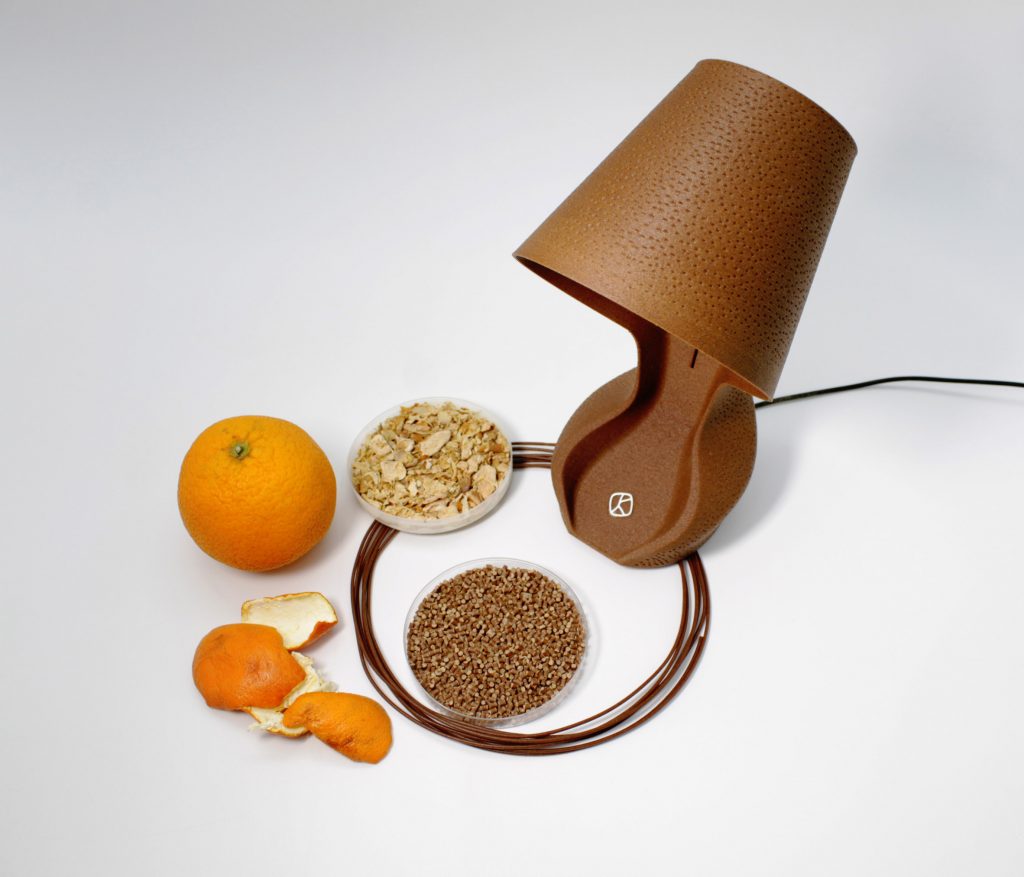
Ohmie by Krill Design
Krill Design, a Milan-based startup, is transforming Sicilian orange peels into the Ohmie lamp, a tactile, compostable product that embodies sustainable design. Recognizing the abundance of oranges in Sicily, the designers chose to utilize discarded peels from a local, family-owned food producer, turning waste into a valuable resource. Each lamp is crafted from the peels of two to three oranges, showcasing the potential of repurposing food waste into functional and aesthetically pleasing objects.
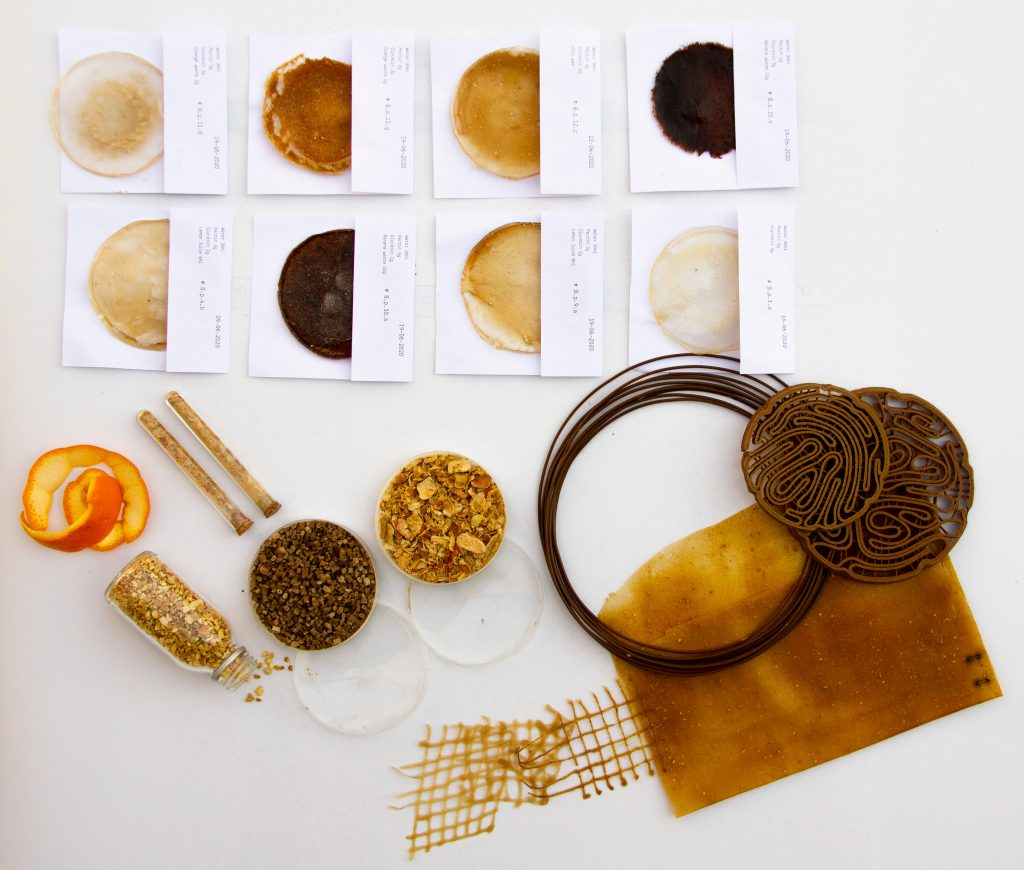
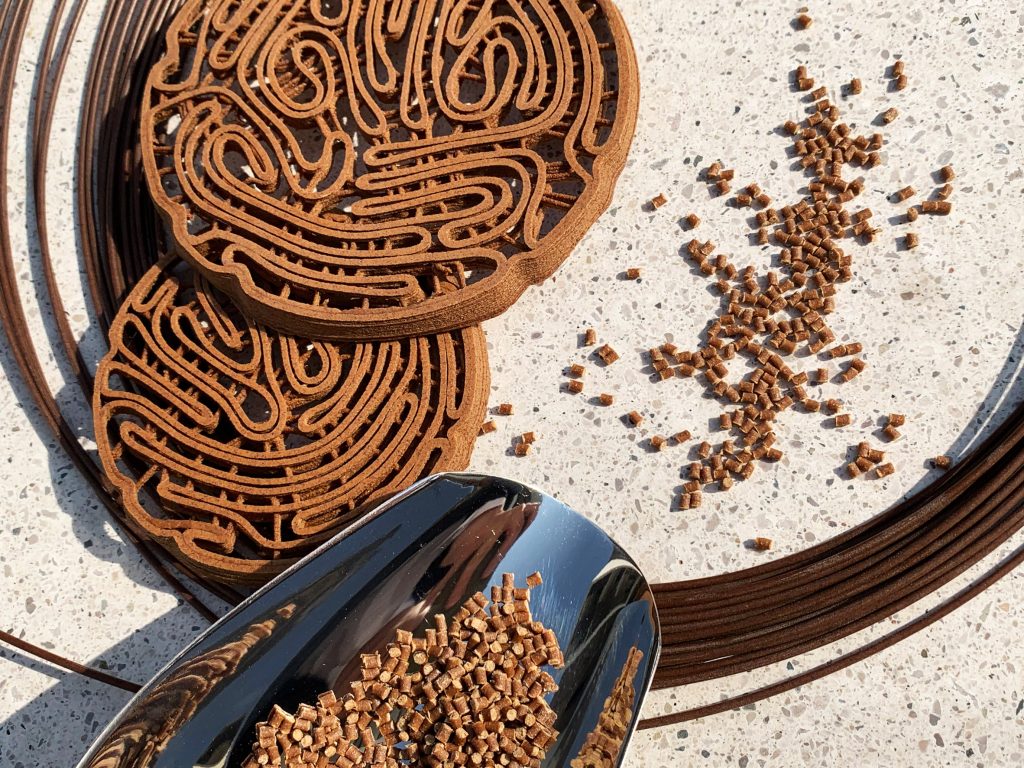
Ohmie by Krill Design
The Ohmie lamp is designed to reflect its origins, from its textured surface and vibrant color to its subtle orange scent. Krill Design aims to demonstrate how food waste can be transformed into eco-design products that are both beautiful and functional, promoting a local and fully Italian supply and production chain. The startup utilized 3D-printing techniques to minimize waste during production, grinding the dried orange peels into a fine powder and combining them with vegetable starch to create a biopolymeric filament.
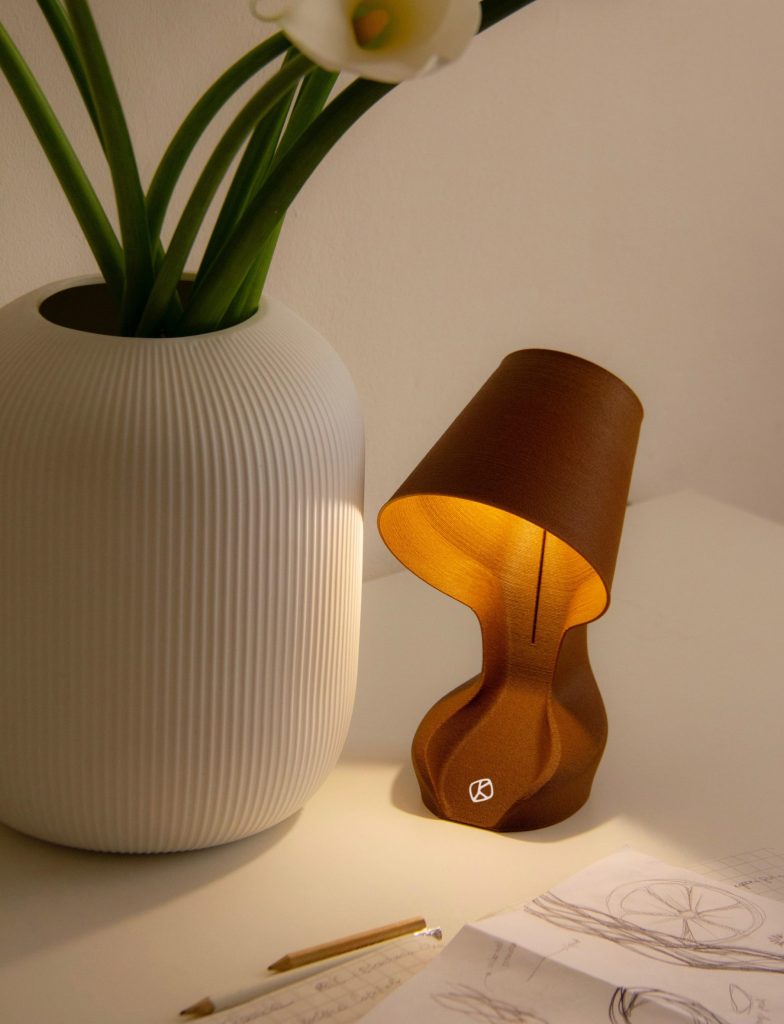
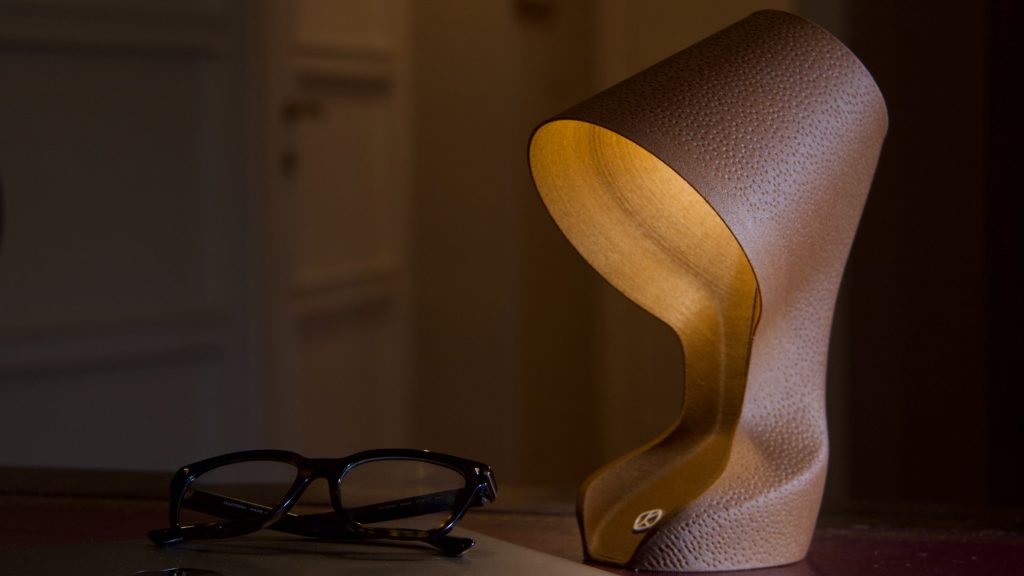
Ohmie by Krill Design
At the end of its life, the Ohmie lamp can be easily broken down by hand and disposed of with organic household waste in composting facilities, where it can be turned into compost or biofuel. While the current material requires industrial composting for performance and durability reasons, Krill Design is actively researching biopolymers that can be composted in nature or in at-home compost systems, further enhancing the lamp’s sustainability. This innovative approach offers a tangible example of how circular economy principles can be applied to product design, turning agricultural waste into a valuable and eco-friendly resource.
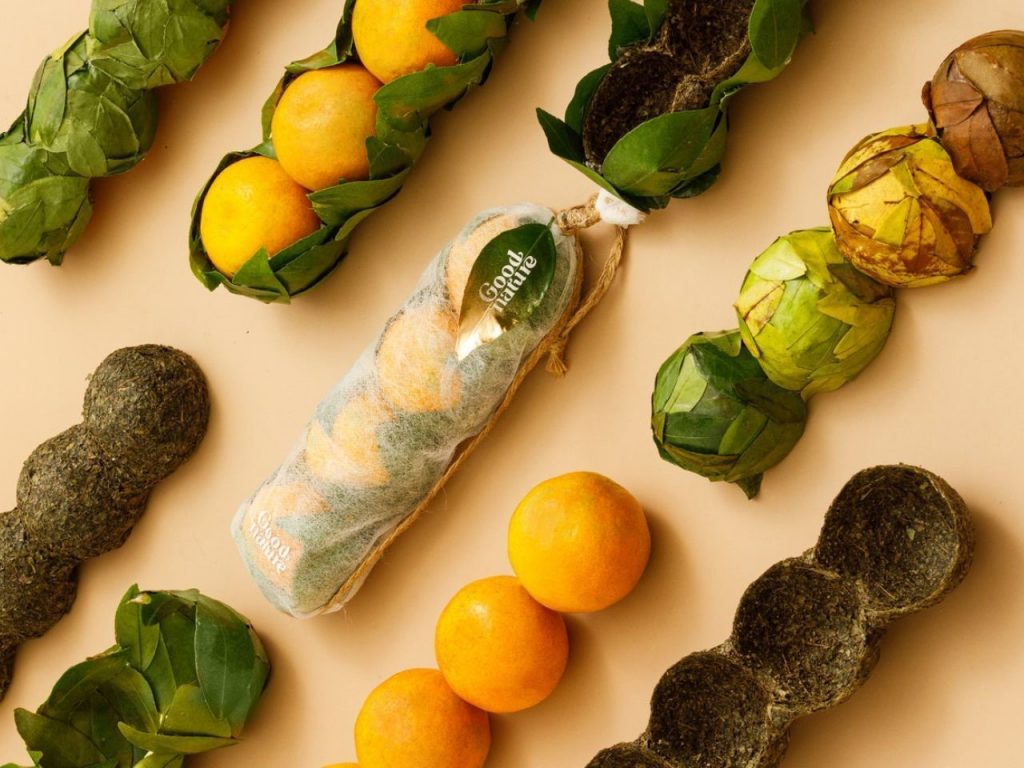
Goodnature packaging (also header image)
Goodnature redefines packaging by transforming fallen orange leaves into biodegradable containers that prioritize sustainability without sacrificing functionality. Unlike conventional, polluting materials, Goodnature’s packaging is crafted entirely from organic resources, decomposing naturally after use to become fertilizer that enriches the soil. This initiative not only promotes environmental responsibility but also supports local communities, as the packaging is handcrafted by skilled artisans in Fang, northern Thailand, preserving traditional craftsmanship.
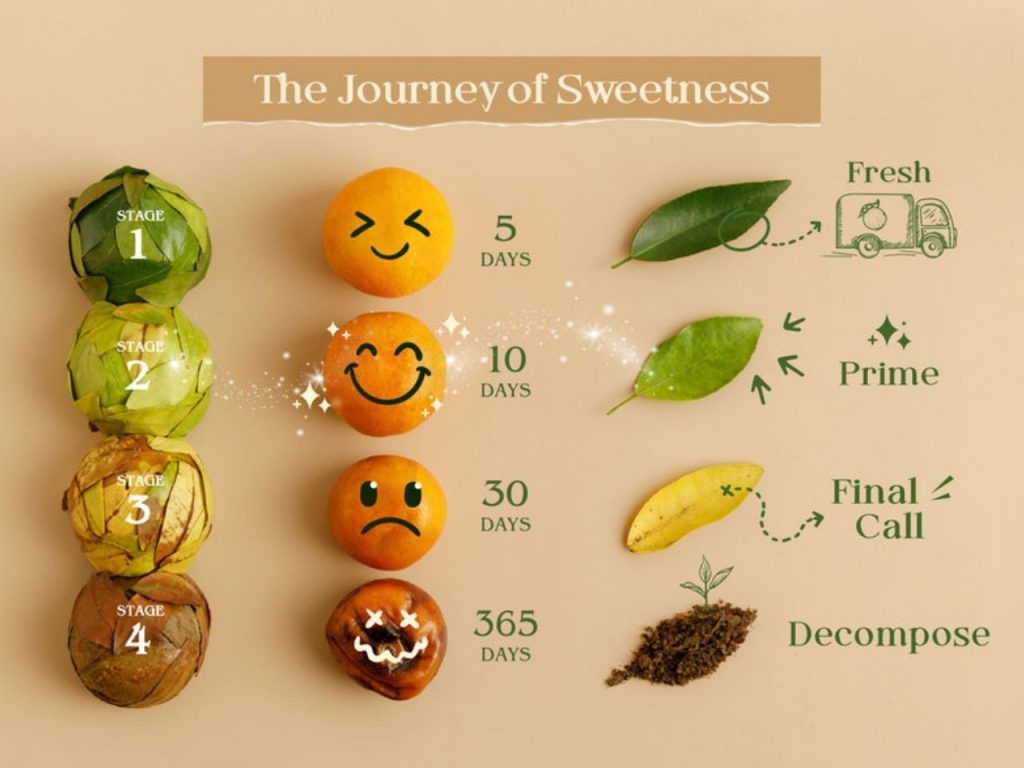
Goodnature packaging
Goodnature goes beyond mere sustainability, enhancing the consumer experience with its innovative freshness indicator. The color of the leaf on the packaging changes over time, intuitively guiding consumers to the optimal consumption period and reducing food waste. Inspired by the chemical-free ecosystem of the Preechafang orchard, the packaging’s structure mimics the resilient architecture of ant nests, further emphasizing its connection to nature’s inherent wisdom.
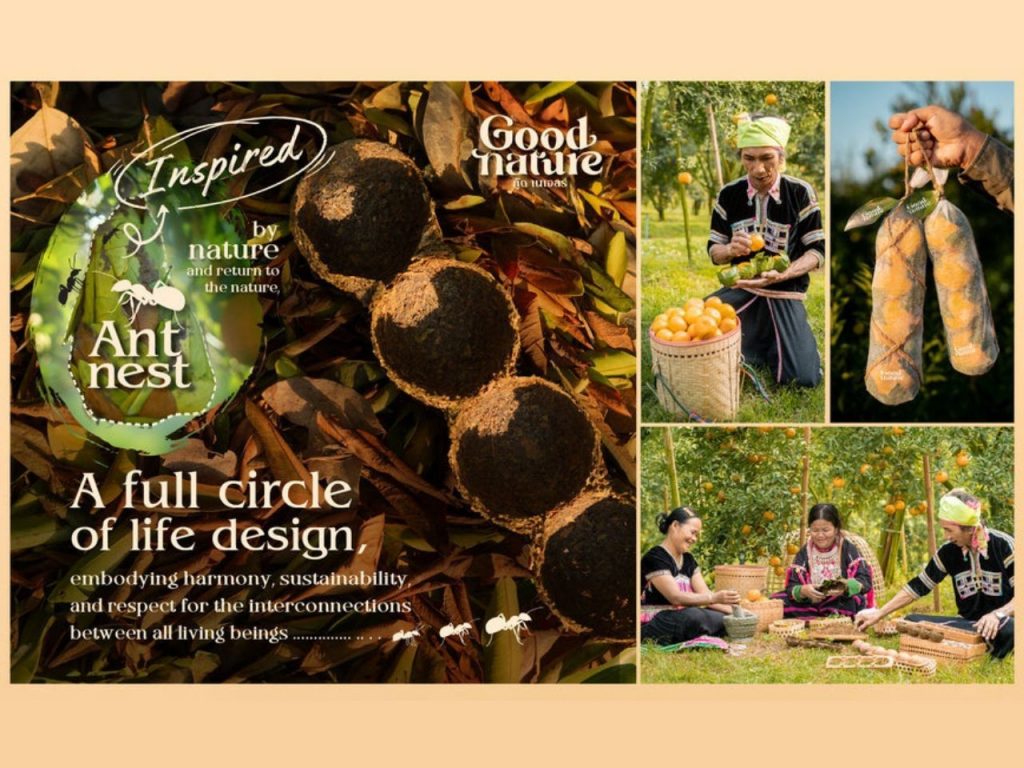
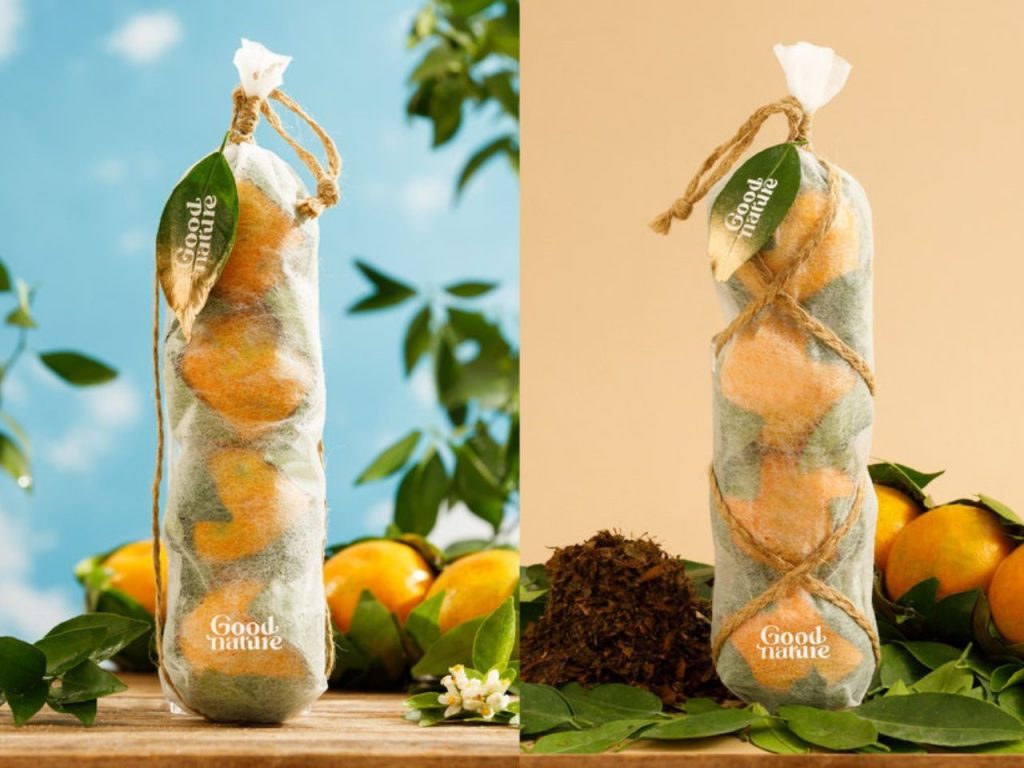
Goodnature packaging
The infinity-shaped design of Goodnature packaging symbolizes the endless cycle of renewal, reinforcing the core principle of sustainability. By utilizing naturally fallen leaves, Goodnature minimizes waste, reduces reliance on raw materials, and eliminates the need for polyurethane and plastic, ensuring breathability for the fruit while maintaining its quality during storage and transportation. This holistic approach to design demonstrates a commitment to environmental and social responsibility, creating a packaging solution that is both functional and ecologically sound.